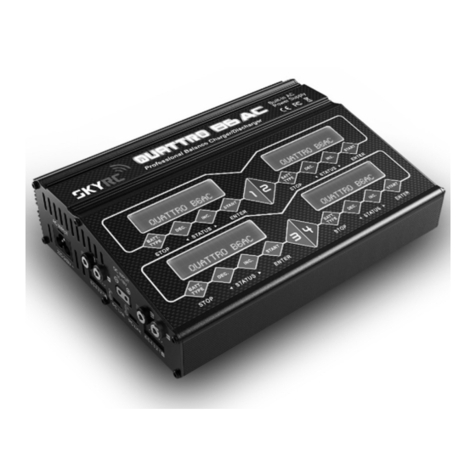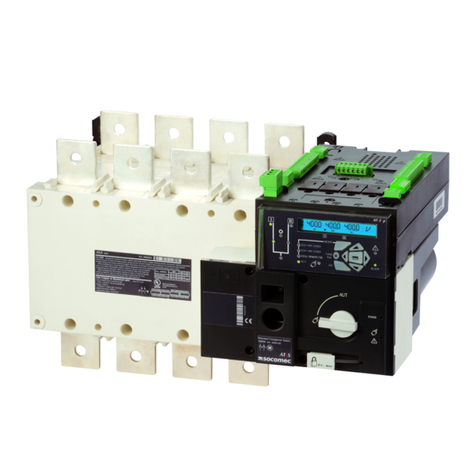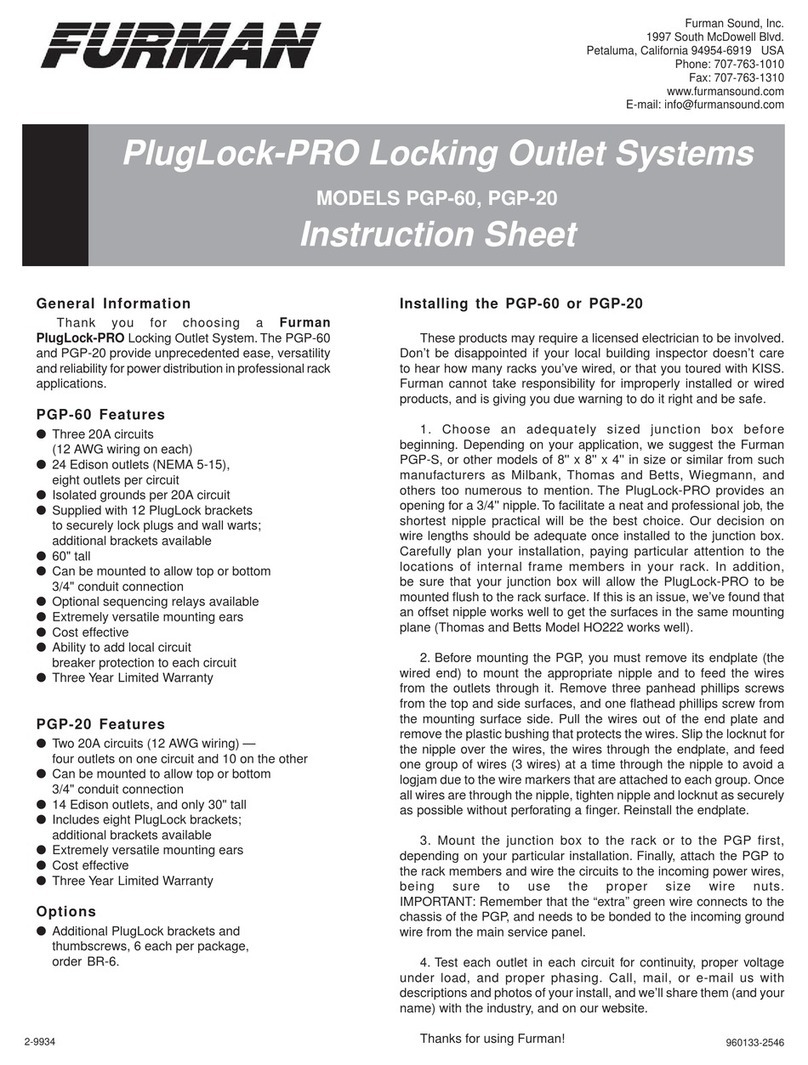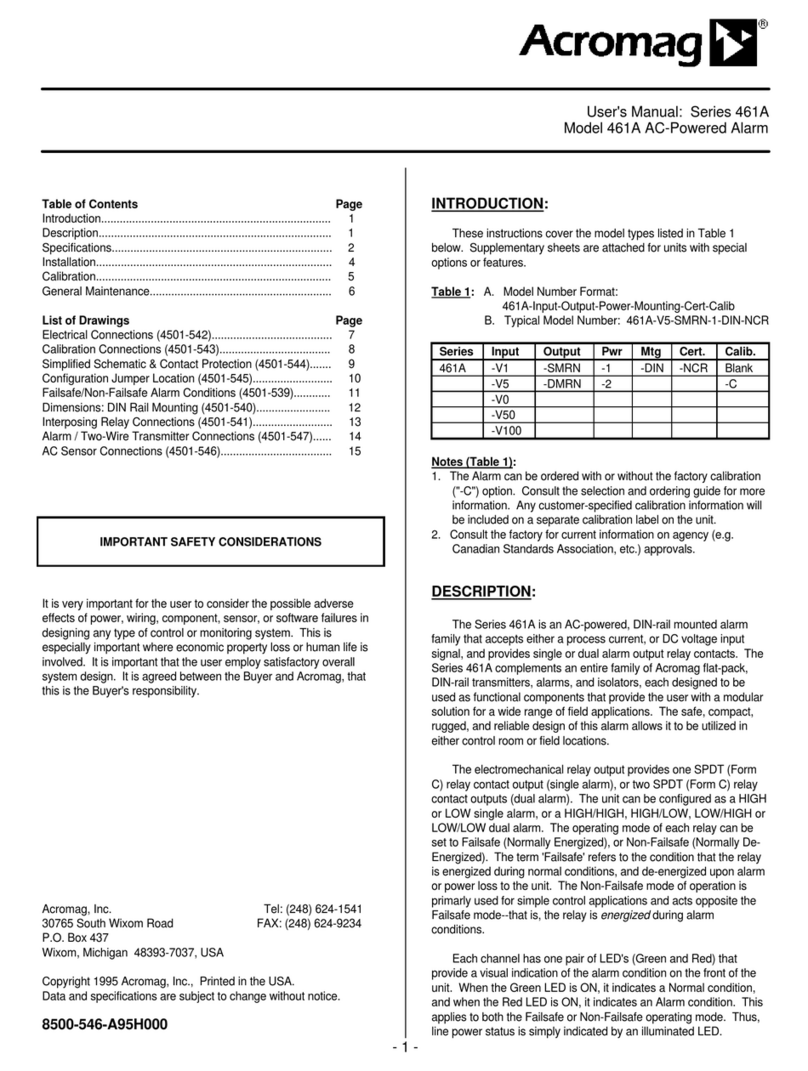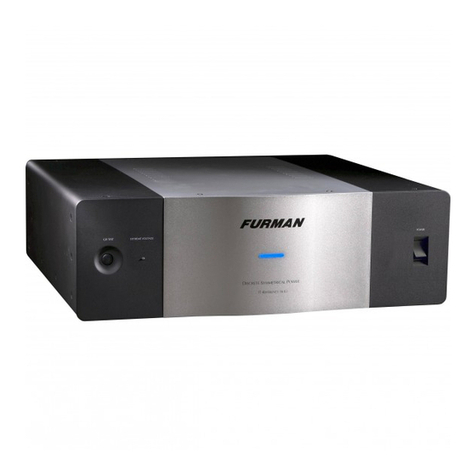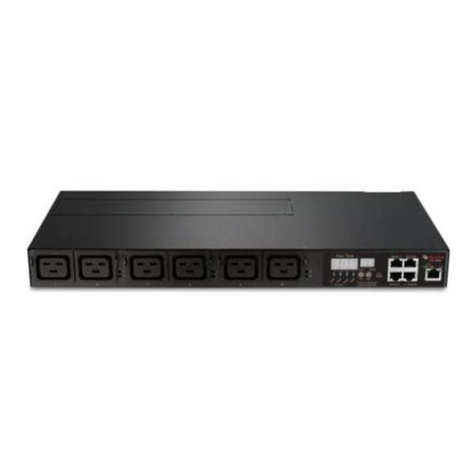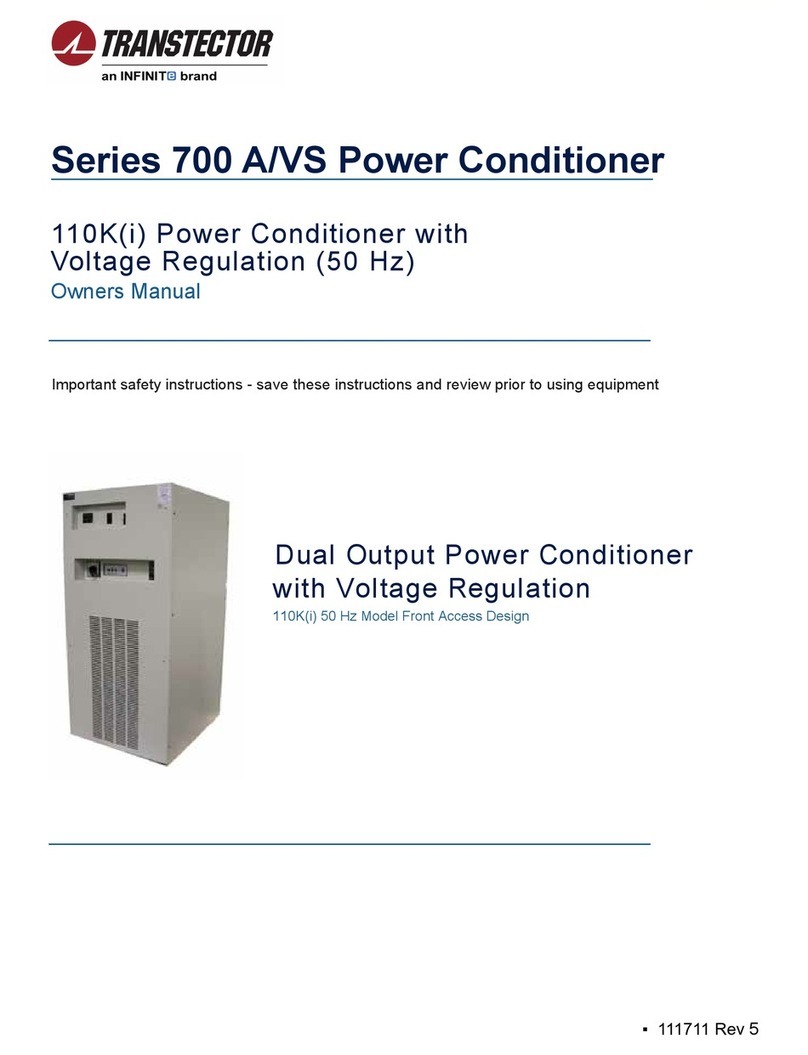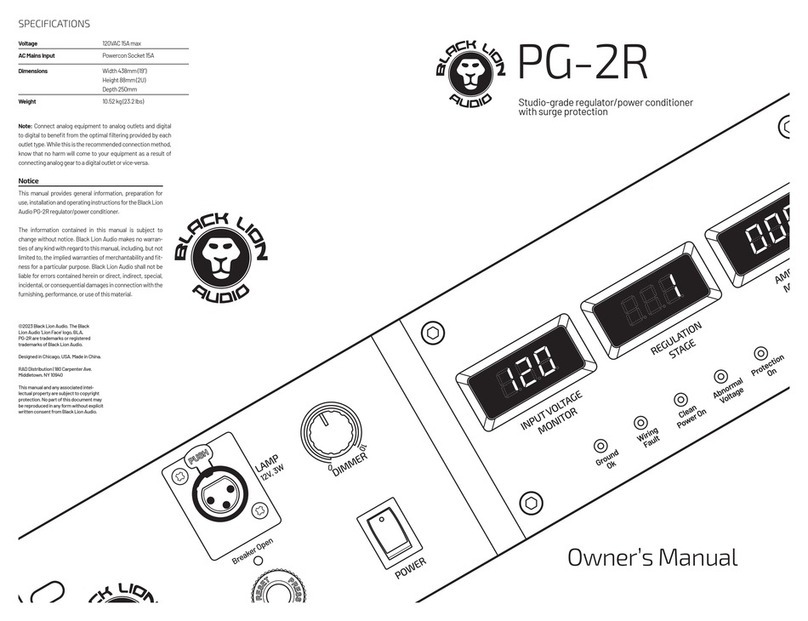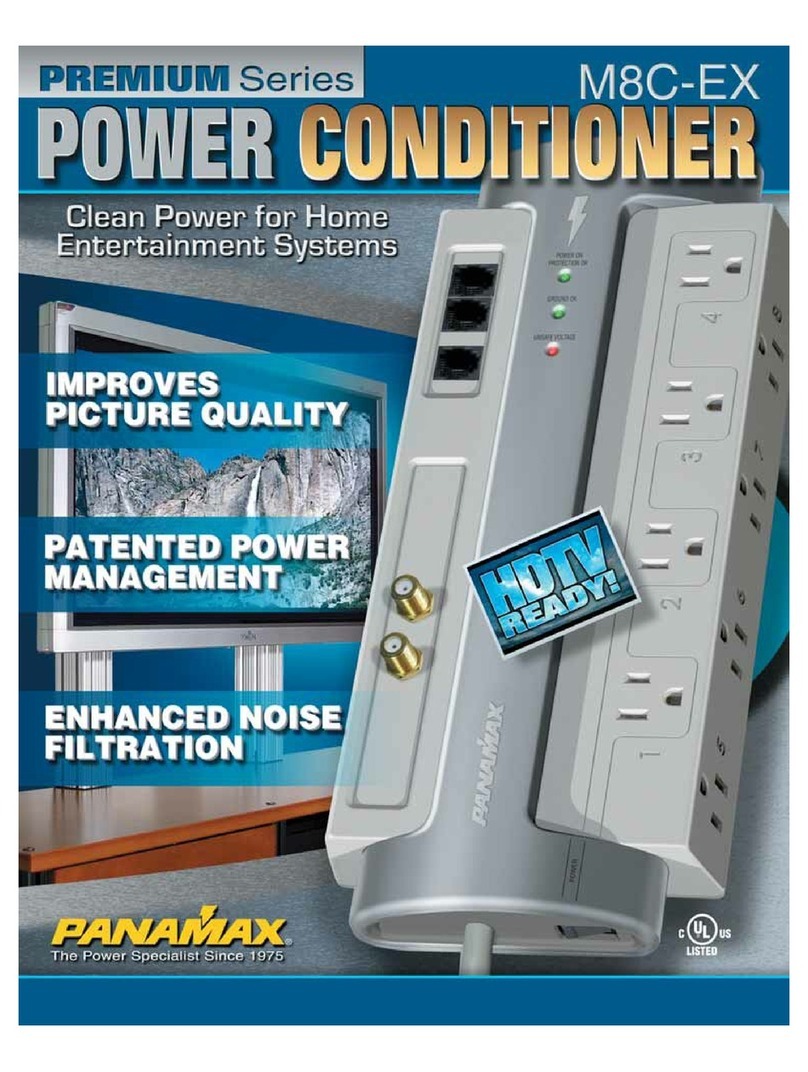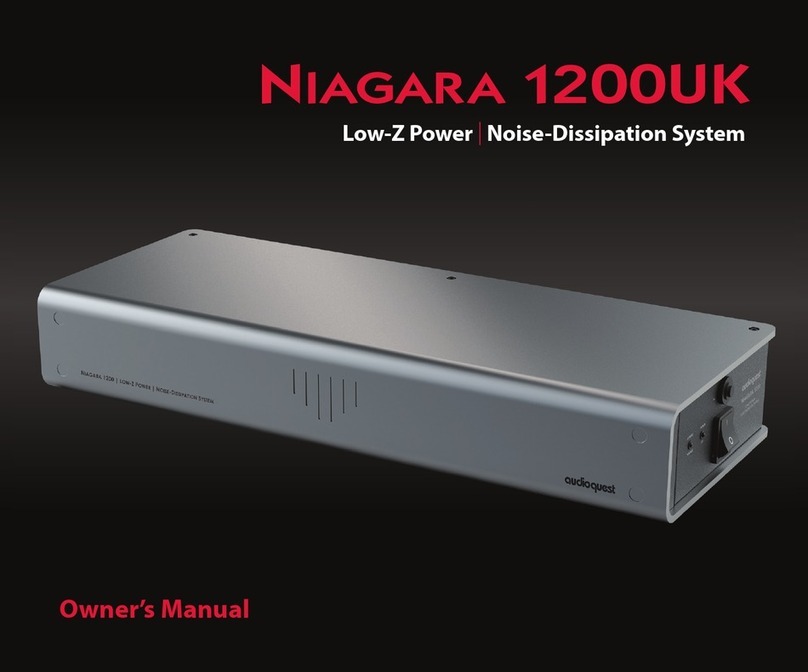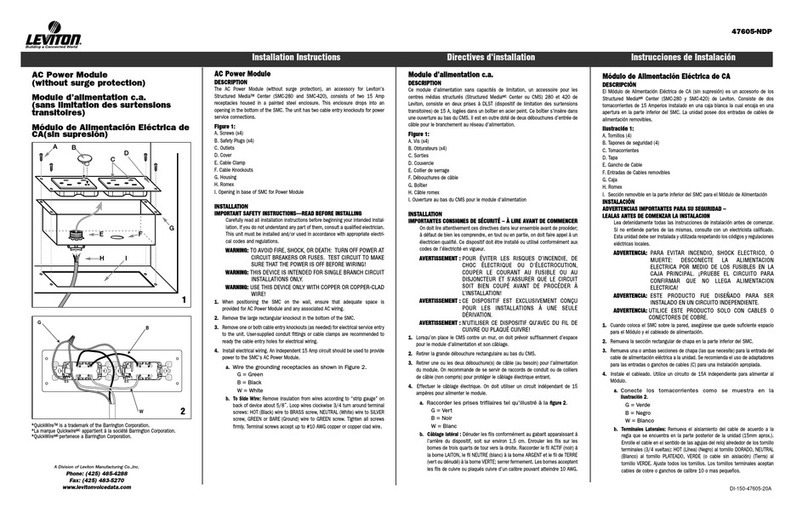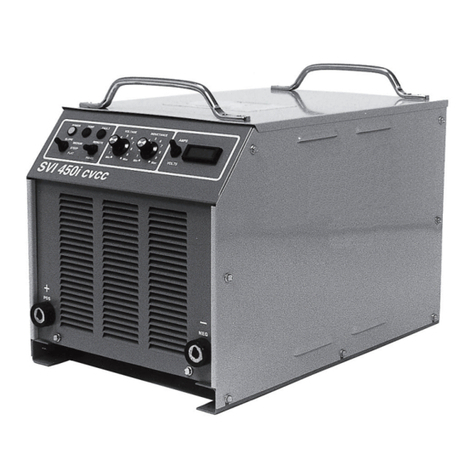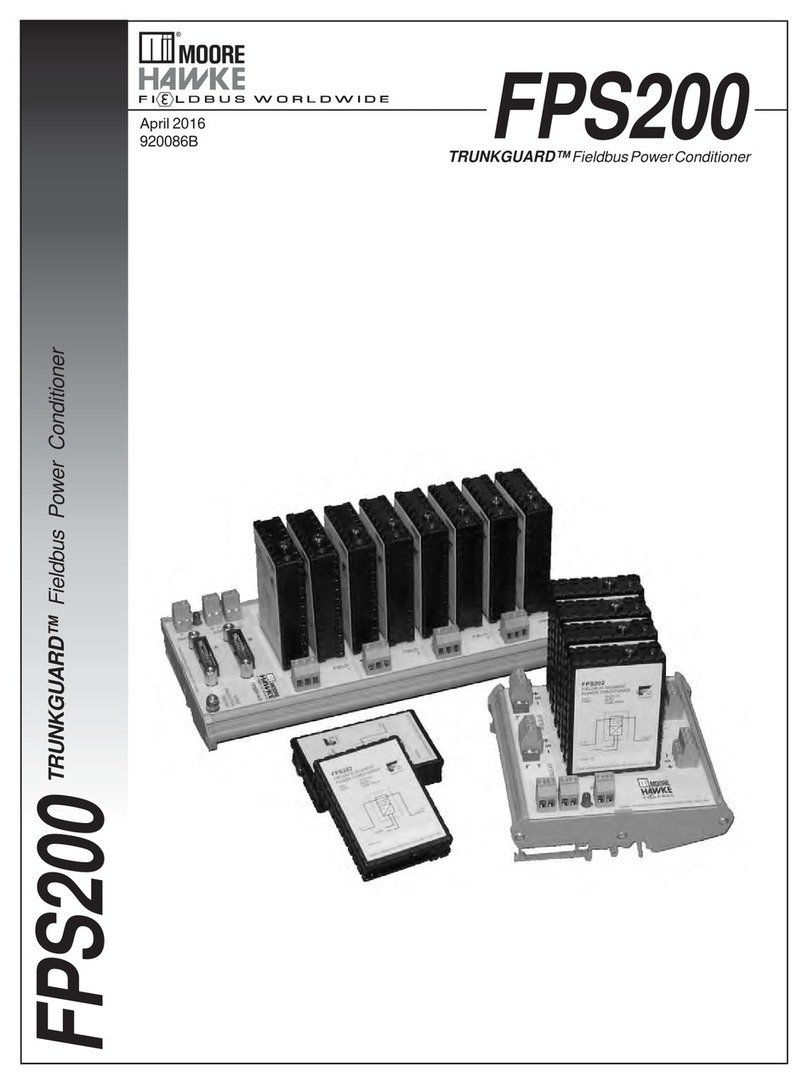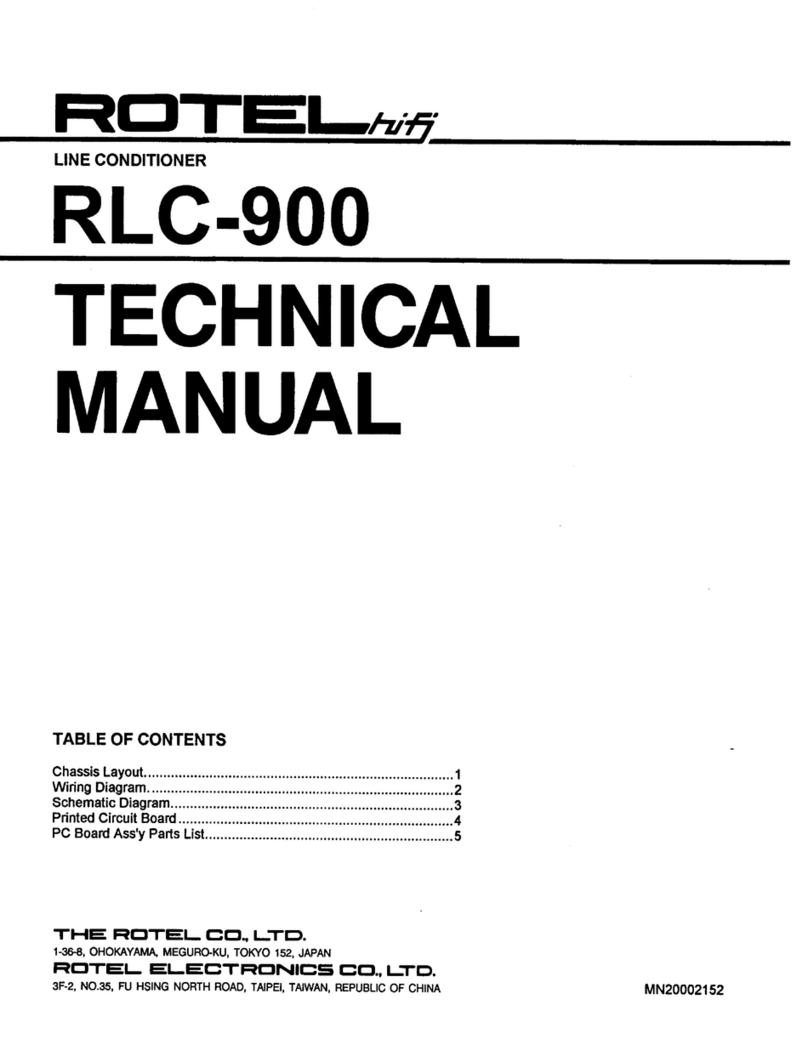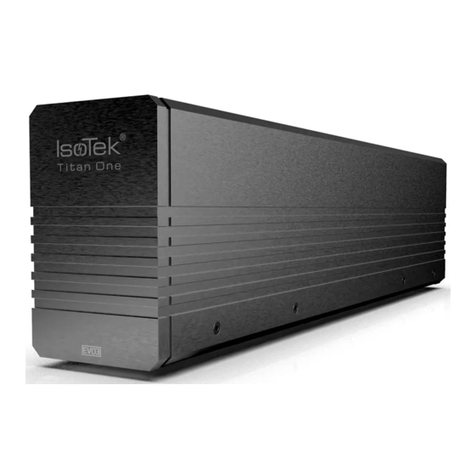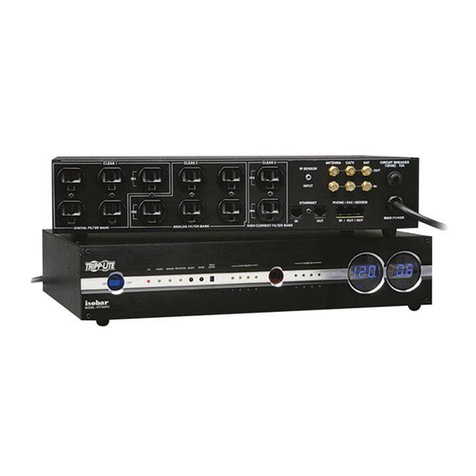Skyrc Ultimate Duo User manual

Instruction Manual
[Version 1.0]
BALANCE CHARGER / DISCHARGER / POWER SUPPLY

Table of Contents
This appliance is not intended for use by persons (including children) with
reduced physical, sensory or mental capabilities, or lack of experience
and knowledge, unless they have been given supervision or instruction
concerning use of the appliance by a person responsible for their safety.
Children should be supervised to ensure that they do not play with the
appliance.
Do not recharge non-rechargeable batteries!
WARNING:
01
03
04
07
10
11
12
14
16
19
23
25
26
28
30
31
32
33
34
35
36
Introduction
SetContains
Special Features
Warning and Safety Notes
Program Flow Chart
Operation
Power and Battery Connection
Operating Program
Lithium Battery Program (LiPo/LiFe/Lilon/LiHV)
NiMH/NiCd Battery Program
Pb Lead-Acid Battery Program
DC Power Supply
Battery Memory Set and Call Out
System Setting
Battery Voltage Meter
Battery Resistance Meter
Warning and Error Message
Specification
Conformity Declaration
Commonly Used Terms
Warranty and Service

Introduction
01 ·
D250
Thanks for your choice of SKYRC Ultimate Duo 250W AC/DC Balance Charger /
Discharger / Power Supply. This unit is simple to use, but the operation of a
sophisticated automatic charger such as SKYRC D250 does require some
knowledge on the part of the user. These operating instructions are designed to
ensure that you quickly become familiar with its functions. It is therefore important
that you read right through the Operating Instructions, Warning and Safety Notes
before you attempt to use your new charger for the first time. We hope you have
many years of pleasure and success with your new battery charger.
SKYRC D250 is a high-performance, micro processor control charge/ discharge
station with battery management suitable for use with all current battery types, with
integral equalizer six-cell Lithium-Polymer (LiPo), Lithium iron phosphate (LiFe) and
Lithium-Ion (LiIon) batteries; maximum 10A charge current.
The additional LiHV mode is able to charge the new generation of LiPo batteries
with an end of charge voltage 4.35V. There are Automatic Charging Current Limit,
Capacity Limit, Temperature Threshold and Processing Time Limit which makes the
charger safe to use.
D250 is a twin-channel charger with two independent circuits which can charge two
different kinds of batteries simultaneously. It also supports power distribution in AC
mode to get max charging power to shorten charging time, the synchronization
mode is available, in which users could perform synchronous settings for charging
same batteries simultaneously to offer time-saving benefits. Besides that, voice
guide is available, which will allow users to enjoy more fun during the using.
Your Ultimate Duo 250W can supply maximum 150 Watts DC power. You can use it
to power equipments that require DC power. It converts standard household power
100-240V AC to 13.8V DC power.
Please BE SURE to read these INSTRUCTIONS, WARNING and SAFETY NOTES
before you use the charger for the first time.
It can be dangerous to mis-handle batteries and battery chargers, as there is
always a risk of batteries catching fire and exploding.

Introduction
· 02 D250
Please read this entire operating manual completely and attentively before using
this product, as it covers a wide range of information on operating and safety. Or
please do use this product in company with a specialist!
Output Socket 4mm Banana Plug
Balance Lead Socket
USB Port
Temperature Sensor Port
Output Socket
4mm Banana
Plug
Balance Lead Socket
Temperature Sensor Port
LCD Display
Cooling Fan
Power
Switch
AC Socket
100-240V
Resume or Start
Charge Processes
Scroll Through the
Main Menu Stop Any
Charge Processes
Alter Values
See the Status of Individual
Cells in Balance Charge Mode
DC Input 11-18V
DC Output 13.8V
DC Output Power
Level Indicator
Micro USB Port
for PC Link

03 ·
D250
The Set Contains
THESETCONTAINS
35
2
4
1
1. SKYRC Ultimate Duo 250W
2. XH Adaptor X 2
3. Charging Cable X 2
4. Banana connectors with XT60 connector Charging Cable X 2
5. Power Cord
6. DC Input/Output Cable
7. Power Distribution
6
7

· 04 D250
Twin-channel Charger
SKYRC D250 allows you to plug 2 batteries into one charger simultaneously, and it will
intelligently and automatically charge 2 battries at once to their maximum capacity. To top
of it, the batteries being charged do not even need to have the same configuration. You
can connect different chemistry(NiMH/NiCd/LiPo/LiFe/Lilon/LiHV/Pb)batteries into any of
the charging ports.
DC Power Output and Power Distribution
Optimized Operating Software
SKYRC D250 features the so-called AUTO function that set the feeding current during the
process of charging or discharging. Especially for lithium batteries, it can prevent the
overcharging which may lead to an explosion due to the user's fault. It can disconnect the
circuit automatically and alarm once detecting any malfunction. All the programs of this
product were controlled through two way linkage and communication, to achieve the
maximum safety and minimize the trouble. All the settings can be configured by users!
Special Features
ENTER
STATUS
BATT/
PROG ENTERSTATUS
BATT/
PROG
Besides charging batteries, your Ultimate Duo 250W can supply 150 Watts DC Power.
You can use it to power equipments that require DC power. It converts standard
household power 100-240V AC to 13.8V DC power.
Power distribution is supported. For example, if you set output power for Channel 1 to
50W and Channel 2 to 100W, DC power output will be 100W automatically, total power is
250W.

05 ·
D250
Special Features
Internal Independent Lithium Battery Balancer
SKYRC D250 employs an individual-cell-voltage balancer. It isn't necessary to connect an
external balancer for balance charging.
Balancing Individual Cells Battery Discharging
During the process of discharging, SKYRC D250 can monitor and balance each cell of
the battery individually. Error message will be indicated and the process will be ended
automatically if the voltage of any single one cell is abnormal.
Adaptable to Various Type of Lithium Battery
SKYRC D250 is adaptable to various types of lithium batteries, such as LiPo, LiIon and
the new LiFe series of batteries.
LiHV Mode Available
The additional LiHV mode is able to charge the new generation of LiPo batteries with an
end of charge voltage 4.35 V.
Battery Memory (Data Store/Load)
The charger can store up to 10 different charge/discharge profiles for each channel. You
can keep the data pertaining to program setting of the battery of continuous charging or
discharging. Users can call out these data at any time without any special program
setting.
Terminal Voltage Control(TVC)
The charger allows user to change the end voltage. (for expert user only)
Fast and Storage Mode of Lithium Battery
Purposes to charge lithium battery varies, 'fast' charge reduce the duration of charging,
whereas 'store' state can control the final voltage of your battery, so as to store for a long
time and protect useful time of the battery.
Re-Peak Mode of NiMH/NiCd Battery
In re-peak charge mode, the charger can peak charge the battery once, twice or three
times in a row automatically. This is good for making certain the battery is fully charged.
Delta-peak Sensitivity for NiMH/NiCd
Delta-peak sensitivity for NiMH/NiCd battery: The automatic charge termination program
based on the principle of the Delta-peak voltage detection. When the battery's voltage
exceeds the threshold, the process will be terminated automatically.

· 06 D250
Automatic Charging Current Limit
You can set up the upper limit of the charging current when charging your NiMH or NiCd
battery, it is useful for the NiMH battery of low impedance and capacity in the 'AUTO'
charging mode.
Capacity Limit
The charging capacity is always calculated as the charging current multiplied by time. If
the charging capacity exceeds the limit, the process will be terminated automatically
when you set the maximum value.
Temperature Threshold*
The battery's internal chemical reaction will cause the temperature of the battery to rise.
If the temperature limit is reached, the process will be terminated.
This function is available by connecting optional temperature probe, which is not included in the package.
*
Processing Time Limit:
You can also limit the maximum process time to avoid any possible defect.
Battery Internal Resistance Meter
The user can check battery's total internal resistance and each cell's internal resistance.
LiPo Battery Voltage Meter
The user can check battery's total voltage, the highest voltage, the lowest voltage and
each cell's voltage.
Special Features
Cyclic Charging/Discharging
1 to 5 cyclic and continuous process of charge > discharge or discharge > charge is
operable for battery refreshing and balancing to stimulate the battery's activity.

07 ·
D250
These warnings and safety notes are particularly important. Please follow the
instructions for maximum safety; otherwise the charger and the battery can be
damaged or at worst it can cause a fire.
Never leave the charger unattended when it is connected to its power supply. If any
malfunction is found, TERMINATE THE PROCESS AT ONCE and refer to the
operation manual.
Keep the charger well away from dust, damp, rain, heat, direct sunshine and vibration.
Never drop it.
The allowable DC input voltage is 11~18V DC, and charge power 250W for 2 channels.
This charger and the battery should be put on a heat-resistant, noninflammable and
nonconductive surface. Never place them on a car seat, carpet or similar. Keep all
the inflammable volatile materials away from operating area.
Make sure you know the specifications of the battery to be charged or discharged to
ensure it meets the requirements of this charger. If the program is set up incorrectly,
the battery and charger may be damaged .It can cause fire or explosion due to
overcharging.
Be very careful to choose the correct voltage for different types of battery otherwise you
may cause damage to the batteries. Incorrect settings could cause the cells to fire or
explode.
Warning and Safety Notes
The allowable AC input voltage is 100~240V AC, and charge power 250W for 2 channels
and power supply.
Standard Battery Parameters
3.7V/cell
Nominal
Voltage
Min. Discharge
Voltage
Max Charge
Voltage
Storage
Voltage
Allowable
Fast Charge
3.7V/cell
4.2V/cell
3.8V/cell
≦1C
LiPo LiIon
3.6V/cell
4.1V/cell
≦1C
3.3V/cell
3.6V/cell
3.3V/cell
≦4C
LiFe
3.0-3.3V/cell 2.9-3.2V/cell 2.6-2.9V/cell
1.2V/cell
1.5V/cell
n/a
1C-2C
NiCd
1.2V/cell
1.5V/cell
n/a
1C-2C
NiMH
2.0V/cell
2.46V/cell
n/a
≦0.4C
Pb
0.1-1.1V/cell 0.1-1.1V/cell
1.8V/cell
LiHV
3.7V/cell
4.35V/cell
3.85V/cell
≦1C
3.1-3.4V/cell

· 08 D250
A battery pack which consists of different types of cells (including different
manufacturers)
A battery that is already fully charged or just slightly discharged.
Non-rechargeable batteries (Explosion hazard).
Batteries that require a different charge technique from NiCd, NiMh, LiPo or Gel cell
(Pb, Lead acid).
A faulty or damaged battery.
A battery fitted with an integral charge circuit or a protection circuit.
Batteries installed in a device or which are electrically linked to other components.
Batteries that are not expressly stated by the manufacturer to be suitable for the
currents the charger delivers during the charge process.
Please bear in mind the following points before commencing charging:
Did you select the appropriate program suitable for the type of battery you are
charging?
Did you set up adequate current for charging or discharging?
Have you checked the battery voltage? Lithium battery packs can be wired in parallel
and in series, i.e. a 2 cell pack can be 3.7V (in parallel) or 7.4V (in series).
Have you checked that all connections are firm and secure?
Make sure there are no intermittent contacts at any point in the circuit.
Charging
During charge process, a specific quantity of electrical energy is fed into the battery.
The charge quantity is calculated by multiplying charge current by charge time. The
maximum permissible charge current varies depending on the battery type or its
performance, and can be found in the information by the battery manufacturer. Only
batteries that are expressly stated to be capable of quick-charge are allowed to be
charged at rates higher than the standard charge current.
Connect the battery to the terminal of the charger: red is positive and black is
negative. Due to the difference between resistance of cable and connector, the
charger can not detect resistance of the battery pack, the essential requirement
for the charger to work properly is that the charge lead should be of adequate
conductor cross-section, and high quality connectors which are normally gold-
plated should be fitted to both ends.
Always refer to the manual by battery manufacturer about charging methods,
recommended charging current and charging time. Especially, the lithium battery
should be charged according the charging instruction provided by the manufacturer
strictly.
Never attempt to charge or discharge the following types of batteries.
Warning and Safety Notes

09 ·
D250
Discharging
The main purpose of discharging is to clean residual capacity of the battery, or to
reduce the battery voltage to a defined level. The same attention should be paid to
the discharging process as charging. The final discharge voltage should be set up
correctly to avoid deep-discharging. Lithium battery can not be discharged to lower
than the minimum voltage, or it will cause a rapid loss of capacity or a total failure.
Generally, lithium battery doesn't need to be discharged. Please pay attention to the
minimum voltage of lithium battery to protect the battery.
Some rechargeable batteries have a memory effect. If they are partly used and
recharged before the whole charge is accomplished, they remember this and will only
use that part of their capacity next time. This is a memory effect. It is said that NiCd
and NiMH batteries are suffering from memory effect. NiCd has more memory effect
than NiMH.
Attention should be paid to the connection of lithium battery especially.
Do not attempt to disassemble the battery pack arbitrarily.
Please get highlighted that lithium battery packs can be wired in parallel and in series.
In the parallel connection, the battery s capacity is calculated by multiplying single
battery capacity by the number of cells with total voltage stay the same. The voltages
imbalance may cause fire or explosion .Lithium battery is recommended to charge in
series.
Warning and Safety Notes

· 10 D250
Program Flow Chart
Note: The flow chart is taking one channel for example as the flow chart for the two channels (Channel 1 and
Channel 2) are identical.
BATT/PROGRAM
Pb BATT
ENTER
Pb CHARGE
2.0A 2.0V (1P)
Pb DISCHARGE
0.1A 2.0V (1P)
BATT/PROGRAM
NiCd BATT
NiCd CHARGE
CURRENT 2.0A
ENTER
NiCd DISCHARGE
0.1A CUT: 1.0V
NiCd CYCLE
CHG>DCHG 1
BATT/PROGRAM
NiMH BATT
ENTER
NiMH CHARGE
CURRENT 2.0A
NiMH DISCHARGE
0.1A CUT: 1.0V
NiMH CYCLE
CHG>DCHG 1
BATT/PROGRAM
LiPo BATT
LiPo BALANCE
2.0A 7.4V (2S)
LiPo CHARGE
2.0A 7.4V (2S)
LiPo FAST CHG
2.0A 7.4V (2S)
LiPo STORAGE
2.0A 7.4V (2S)
LiPo DISCHARGE
2.0A 7.4V (2S)
ENTER
BATT/PROGRAM
LiFe BATT
Lilo BALANCE
2.0A 7.2V (2S)
Lilo CHARGE
2.0A 7.2V (2S)
Lilo FAST CHG
2.0A 7.2V (2S)
Lilo STORAGE
2.0A 7.2V (2S)
Lilo DISCHARGE
2.0A 7.2V (2S)
ENTER
BATT/PROGRAM
LiIo BATT
LiFe BALANCE
2.0A 6.6V (2S)
LiFe CHARGE
2.0A 6.6V (2S)
LiFe FAST CHG
2.0A 6.6V (2S)
LiFe STORAGE
2.0A 6.6V (2S)
LiFe DISCHARGE
2.0A 6.6V (2S)
ENTER
NiCd RE-PEAK
1
NiMH RE-PEAK
1
NiMH Auto CHARGE
CURRENT 2.0A
NiCd Auto CHARGE
CURRENT 2.0A
LiHV BALANCE
2.0A 7.6V (2S)
LiHV CHARGE
2.0A 7.6V (2S)
LiHV FAST CHG
2.0A 7.6V (2S)
LiHV STORAGE
2.0A 7.6V (2S)
LiHV DISCHARGE
2.0A 7.6V (2S)
BATT/PROGRAM
LiHV BATT
ENTER
BATT/PROGRAM
BATT METER
3.99 4.00 3.99 V
0.00 0.00 0.00 V
MAIN 11.98V
H4.003V L3.986V
BATT/PROGRAM
BATT MEMORY
ENTER
[ BATT MEMORY 1 ]
ENTER SET->
ENTER
BATT TYPE
LiPo
BATT VOLTAGE
7.4V ( 2S )
CHARGE CURRENT
4.9A
DISCHG CURRENT
2.2A
DISCHG VOLTAGE
3.0V/CELL
TVC=YOUR RISK
4.20V
ENTER
ENTER
BATT/PROGRAM
SYSTEM SETTING->
ENTER
Stop
Batt/
Type
SAVE PROGRAM
ENTER
SAVE PROGRAM
SAVE….
[ BATT MEMORY 1 ]
LiPo 7.4V (2S )
[ BATT MEMORY 1 ]
C:4.9A D:2.2A
ENTER CHARGER
LOAD……
LiPo BALANCE CHG
4.9A 7.4V(2S)
LiPo CHARGE
4.9A 7.4V(2S)
LiPo FAST CHARGE
4.9A 7.4V(2S)
LiPo STORAGE
4.9A 7.4V(2S)
LiPo DISCHARGE
2.2A 7.4V(2S)
BATT TYPE
NiMH
BATT VOLTAGE
2.4V (2S)
ENTER
CHARGE CURRENT
3.3A
TRICKLE
100mA
PEAK DELAY
1Min
DISCHG CURRENT
2.2A
DISCHG VOLTAGE
1.1V/CELL
SAVE PROGRAM
ENTER
ENTER
BATT TYPE
Pb
BATT VOLTAGE
4.0V (2P)
CHARGE CURRENT
3.3A
DSCH CURRENT
1.5A
DSCH VOLTAGE
1.7V/CELL
SAVE PROGRAM
ENTER
BATT/PROGRAM
BATT RESISTANCE
ENTER
5 3 3 mΩ
0 0 0 mΩ
TATAL: 11mΩ
ENTER
ENTER>3Seconds
SAVE PROGRAM
SAVE….
ENTER
[ BATT MEMORY 2 ]
NiMH 2.4V (2S )
[ BATT MEMORY 2 ]
C:1.0A D:1.0A
ENTER>3s
ENTER CHARGER
LOAD……
NiMH CHARGE
CURRENT 1.0A
NiMH Auto CHARGE
CURRENT 1.2A
NiMH DISCHARGE
1.0A CUT: 2.0V
NiMH RE-PEAK
2
NiMH CYCLE
DCHG>CHG 1
[ BATT MEMORY 2 ]
ENTER SET->
[ BATT MEMORY 3 ]
ENTER SET->
SAVE PROGRAM
SAVE….
ENTER
[ BATT MEMORY 3 ]
Pb 4.0V (2S )
[ BATT MEMORY 3 ]
C:3.3A D:1.5A
ENTER CHARGER
LOAD……
Pb CHARGE
3.3A 4.0V(2P)
Pb DISCHARGE
1.5A 4.0V(2P)
Capacity Cut-Off
ON 5000mAH
Temp Cut-Off
ON 50°C 122°F
Rest Time
CHG>DCHG 10Min
Safety Timer
ON 120Min
Synchronization
OFF
CH1: 100 CH2: 100W
DC SUPPLY: 50W
NiMH Sensitivity
D.Peak Default
NiCd Sensitivity
D.Peak Default
Key Beep ON
Buzzer ON
DC Input Low
CUT-OFF 11.0V
Temperature Unit
Celsius
ENTER
ENTER > 3s
Version
HW:1.00 SW: 1.10
Load Factory Set
Enter

11 ·
D250
Operation
When you are willing to alter the parameter value in the program, press the
START/ENTER button to make it blink then change the value by pressing DEC and INC
button. The value will be stored by re-pressing the START/ENTER button. If there is
another parameter can be altered in the same screen, when you confirm the first
parameter value, the next parameter value will start to blink which means it is ready to
alert.
When you are willing to start the process, press and hold the START/ENTER button for 3
seconds. When you are willing to stop the progress or go back to previous step/screen,
press the BATT PROG/STOP button once.
When you power on the charger, it will enter LiPo Battery balance program directly. You
could change the mode (balance mode, normal charge mode, fast charge mode, store
mode or discharge mode), enter the desired charging/discharging mode, set the referred
parameter and start the progress.
If you have no request for LiPo Battery program, please press the BATT PROG/STOP
button to enter BATT PROGRAM screen.
BATT PROG / STOP Button:
It is used to stop the progress or go back to previous step/screen
DEC Button:
It is used to go through the menus and decrease the parameter value
INC Button:
It is used to go through the menus and increase the parameter value
ENTER / START Button:
It is used to enter parameter or store parameter on screen, resume or start charge
processes.

· 12 D250
Power and Battery Connection
1. Connecting to power source
There are two kinds of inputs for SKYRC D250, DC 11-18V and AC 100-240V.
12V DC Battery / DC power supply connection.
AC 100-240V power source connection.
ENTER
STATUS
BATT/
PROG ENTERSTATUS
BATT/
PROG
ENTER
STATUS
BATT/
PROG ENTERSTATUS
BATT/
PROG
XT60

13 ·
D250
1) LiPo Battery Connection with Balance Adapter
2) NiMH/NiCd or Pb Battery Connection
TO AVOID SHORT CIRCUITS, ALWAYS CONNECT THE CHARGE LEADS
TO THE CHARGER FIRST, AND THEN TO THE BATTERY. REVERSE THE
SEQUENCE WHEN DISCONNECTING THE PACK.
WARNING!
2. Connecting the battery
Balance Socket
The balance wire attached to the battery must be connected to the charger with the
black wire aligned with the negative marking. Ensure correct polarity!
For safety reasons, the default setting for charging Lithium (LiPo, Lilo, LiFe and LiHV)
battery is using balance adaptor to connect battery and charger in Charge, Fast Charge,
Balance Charge and Storage modes. But if the battery comes with no balance wire, it will
prompt you “No balance cable detected push enter to continue” in Charge, Fast Charge
and Storage modes.
Note: We will explain the operating procedure of one channel as the procedure for
channel 1 and 2 is identical.
Power and Battery Connection
LiPo
NiMH
ENTER
STATUS
BATT/
PROG ENTERSTATUS
BATT/
PROG
ENTER
STATUS
BATT/
PROG ENTERSTATUS
BATT/
PROG

· 14 D250
Operating Program
Here is the detailed procedure to make the charger work. All the screens and operations
will take Li-Po BALANCE CHARGE program for example,
Note: We will explain one channel as the operating procedure
of Channel 1 and Channel 2 is identical.
1. Connection
Connecting to power source
There are two kinds of inputs for SKYRC D250, DC 11-18V and AC 100-240V.
A. Operating in AC mode
SKYRC D250 comes with built in switching power supply. You can connect the AC
power cord directly to the main AC socket. (100-240V AC).
Note: The charging power in AC mode is 250W totally for Channel 1, Channel 2 and
Power supply.
In AC mode, it supports Power Distribution. The total power for Channel 1, Channel
2 and power supply is 250W. You could set the Max Power for one channel (Take
Channel 1 for example)as following,
And the DC power supply will take the rest power automatically (For example, if you set
channel 1 as 120W and channel 2 as 50W,the power supply will be 80W).
If Channel 1 and Channel 2 are both charging, you can’t change the power
distribution.
If Channel 1 is charging, you can change power of Channel 2 and Channel 1,
the power supply will take the rest power automatically.
B. Operating in DC mode
Please connect SKYRC D250 with AC/DC power supply by supplied DC input cable. Also
you could use terminal clips with DC connectors, for attaching directly to 12V car
batteries. It is critically important that you use either a fully charged 13.8V car battery or a
high quality AC/DC power supply in the range of 11-18V DC output with minimum power
300W or higher to insure reliable performance.
1).
NOTE1:
NOTE2:
C H 1:12 0 C H 2 : 5 0W
D C S UPPL Y : 8 0 W
C H 1:12 0 C H 2 : 5 0W
D C S UPPL Y : 8 0 W

D250 15 ·
Failure to connect as shown in this diagram will damage this charger.
To avoid short circuit between the charge lead always connect the charge cable to the
charger first, then connect the battery. Reverse the sequence when disconnecting.
WARNING:
Connecting the battery
Important!!! Before connecting a battery it is absolutely essential to check one last
time that you have set the parameters correctly. If the settings are incorrect, the
battery may be damaged, and could even burst into flames or explode. To avoid
short circuits between the banana plugs, always connect the charge leads to the
charger first, and only then to the battery. Reverse the sequence when
disconnecting the pack.
Balance Socket
The balance wire attached to the battery must be connected to the charger with the
black wire aligned with the negative marking. Take care to maintain correct polarity!
(See the wiring diagram below.)
This diagram shows the correct way to connect your battery to the SKYRC D250
while charging.
2).
3).
Operating Program
It is a MUST for charging Lithium (LiPo, Lilo, LiFe and LiHV) battery in
Balance Charge mode. If you don't connect the battery to the balance socket
while the charger is working in mentioned mode, the charger won't start
working.
ENTER
STATUS
BATT/
PROG

· 16 D250
The following flowcharts show the entire programming menu. It is highly recommended to
keep these flowcharts handy while you learn how to operate this charger.
There are two main ways to program the charger.
A memory profile is available for setting and storing pertinent information for up to
40 different program sets; each channel can store 10 sets. Once a battery program
is stored into memory, it will be retained until changed again manually. Recalling a
program memory number makes the charger instantly ready to go!
If you do not wish to use the battery program memories, this charger can be
manually set before each use.
(1)
(2)
The following flowchart shows how the program is set manually:
BATT/PROGRAM
LiPo BATT
LiPo BALANCE CHG
2.0A 11.1V (3S)
LiPo BALANCE CHG
2.0A 11.1V (3S)
LiPo BALANCE CHG
2.0A 11.1V (3S)
LiPo BALANCE CHG
2.0A 11.1V (3S)
BATT/PROGRAM Select
Mode Select
Program Start
Press INC and DEC to go through all the programs and press
START/ENTER to enter LiPo BATT Program.
Battery Setting
Press INC and DEC to go through all the modes and press
START/ENTER to enter LiPo Balance Charge Mode.
Press START/ENTER, the present value will start to blink. Press
INC and DEC to change the value and press START/ENTER to
confirm your setting.
At the same time, the battery pack’s cell count will start to blink,
press INC and DEC to change the value and press START/
ENTER to confirm your setting.
Press and hold START/ENTER for 3 seconds to start the
program.
START/ENTER
START/ENTER
START/ENTER
START/ENTER
START/ENTER
> 3 Seconds
Lithium Battery Program (LiPo/LiFe/Lilon/LiHV)

17 ·
D250
R:3SER S:3SER
CONFIRM(ENTER)
Lp3s 1.5A 12.14V
BAL 000:50 00022
START/ENTER
Charging Status Monitor
R shows the number of cells detected by the charger and S is the number
of cells set by you on the previous screen. If the two numbers are identical,
press START/ENTER to start the charging process.
During charge process, real-time status will be shown as seen on the left.
The battery icon indicates the charge/discharge status and finished
capacity percentage.
Green—charge Red—discharge
NOTE:
Program Stop
During the charging process, press STOP to stop the charging process.
Program Complete
Lithium Battery Program(LiPo/LiFe/Lilon/LiHV)
BATTERY CHECK
WAIT... The charger is detecting the battery cell.
R shows the number of cells detected by the charger and S is
the number of cells set by you on the previous screen. If the
two numbers are not identical, press STOP to go back to the
previous screen to recheck the number of cells of the battery
pack that you set before going ahead.
R:3SER S:3SER
CANCEL(STOP)
[ END: FINISHED ]
16.8V 2600mAh
[ Time: 00: 45: 32 ]
16.8V 2600mAh
Once the battery is fully charged, the screen will read “END:
FINISHED” and the charger will emit a ringing sound. The
charger also displays battery voltage, charging capacity and
elapsed time.

· 18 D250
Lithium Battery Program (LiPo/LiFe/Lilon/LiHV)
VARIOUS INFORMATION DURING THE PROCESS
Press INC or DEC during the charging or discharging process to view further pertinent information on
the LCD screen.
Lp3s 1.5A 12.14V
BAL 000:50 00022
4.07 4.06 4.11 V
0.00 0.00 0.00 V
Fuel= 90%
Cell= 4.10V
INC
INC
Lp3s 1.5A 12.14V
BAL 000:50 00022
Ext. Temp ----
Int. Temp 37°C
DEC
Temp Cut-Off
50C
DEC
Final voltage when the program ends.
Input voltage.
Safety timer ON and duration of time in minutes.
Capacity cut-off ON and value of the set capacity limit.
Voltage of each cell in the battery pack when the battery is connected
with balance lead.
Internal temperature.
Temperature probe needs to be connected to show external temperature.
Charged capacity percentage and average cell voltage of the battery
pack.
Real-time status: battery type, battery cell count, charge current, battery
pack total voltage, elapsed time and charge capacity.
Cut off temperature.
DEC
DEC
DEC
DEC
End Voltage
12.6V(3S)
IN Power Voltage
12.56V
Safety Time
ON 200min
Capacity Cut-Off
ON 5000mAh
Table of contents
Other Skyrc AC Power Distribution manuals
